Art Is Still Here: A Hypothetical Show for a Closed Museum
2020 FEB 13 – ONGOING
ROOM【0305FV】
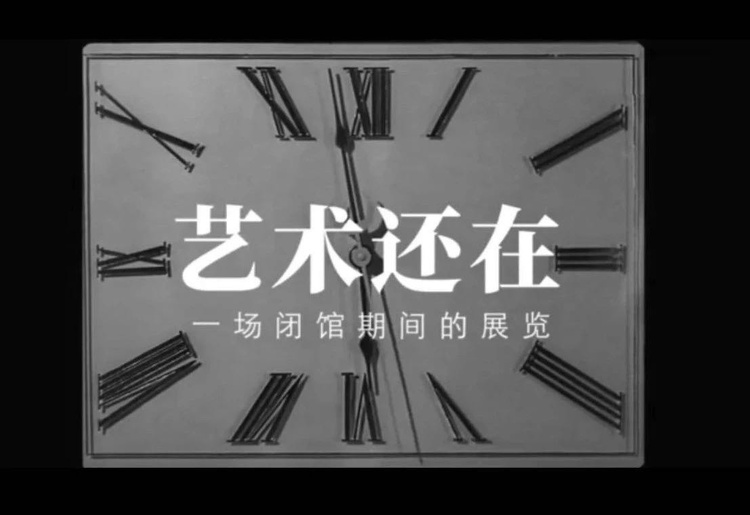
M WOODS Online Schedule (CST Beijing Time):
Weibo: Everyday @ 12.00 pm
WeChat: Every Thursday @ 6.00 pm
Instagram: Every Thursday and Friday @ 10.00 pm
WEEK #6 and 42 days into our online exhibition ‘Art Is Still Here: A Hypothetical Show for a Closed Museum’, that continues to promote at home viewership and ‘institutional distancing’. Art Is Still Here: A Hypothetical Show for a Closed Museum
2020 FEB 13 – ONGOING
ROOM【0305FV】

M WOODS Online Schedule (CST Beijing Time):
Weibo: Everyday @ 12.00 pm
WeChat: Every Thursday @ 6.00 pm
Instagram: Every Thursday and Friday @ 10.00 pm
Today we present our next seven contributions by artists:
Sun Xun | Michael Najjar | Liu Shiyuan | Yu Ji | Zadie Xa | Huang Rui | and Laure Prouvost
Beijing based artist Sun Xun’s animated film shows us how fragmented history is, and the state of shock we can all feel as an outcome of disintegrate time. In the collaborative work ‘Best Friends Forever’, Liu Shiyuan and Kristian Mondrup registered two Twitter accounts— "Art (@GlobalArtworld)"and "Politics (@ImportantPolicy)" to initiate improvised online conversations both publicly and privately, around topics that encompass art and politics.
Michael Najjar’s work ‘Terraforming’ focuses on the transformation of a natural environment though energy input. Shanghai based artist Yu Ji contributes a work from her performances series shot in Lainzer Tiergarten. Zadie Xa helps understand the interconnections between Korean folkloric creation myths, matrilineal knowledge structures and marine ecologies as metaphors for exploring the unknown.
Huang Rui brings us to Beijing and Nara, shares his views on contemporary thinking during the quarantine period, and images of his first studio after leaving China shortly after the Stars Movement in the 1980s. Laure Prouvost comments on global warming, and offers a future proposition and solution. to the issue of this problem. Obliquely contemplating how we might collectively think about conserving water.
This project was originally developed as a response to the forced closure of our museums, institutions, and galleries in China, and to limit the exposure of our staff and communities during the COVID 19 outbreak. This project now takes on new meaning as the COVID 19 disease begins to affect communities and cultural institutions internationally.
The museum will continue to find ways of working with artists, institutions, and galleries remotely as an act of solidarity with our fellow institutions abroad and to promote the safety of our communities. We thank all the artists and galleries who have supported this project over the six five weeks with their contributions and art!
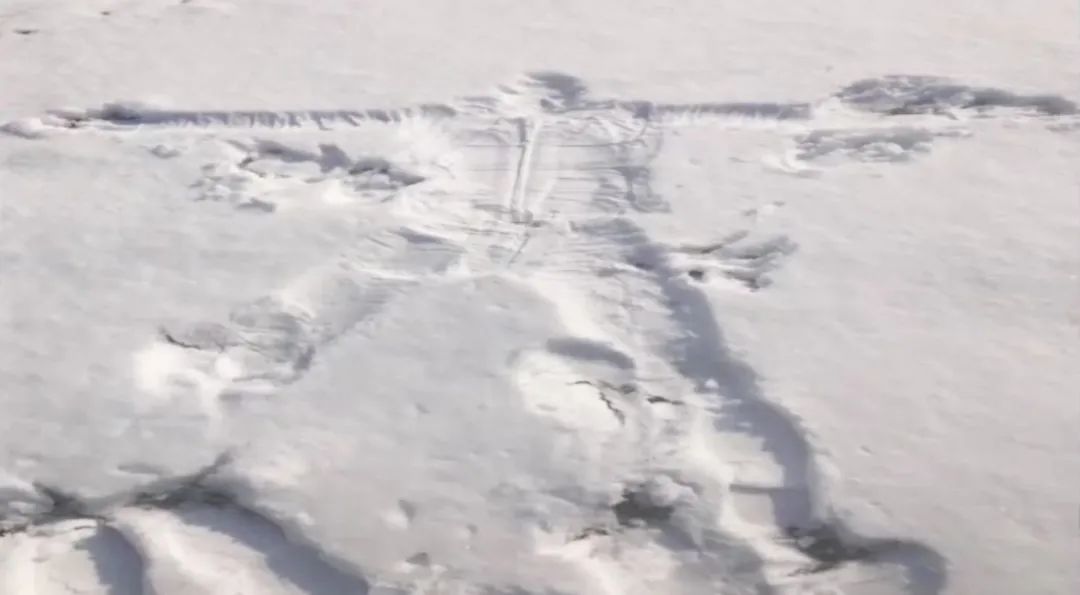
Huang Rui, Terroir of olden days, 2020, Video, 57 sec
Courtesy the artist
Biography:
Huang Rui was born in 1952 in Beijing. Like many urban youth of his generation, Huang was forced to cease his formal education during the Cultural Revolution (1966–76) and work in the countryside, for him Inner Mongolia, for so-called re-education. When this decade of political turmoil ended, Huang took advantage of the tentatively liberal cultural climate over the next few years. He became involved with a community of young intellectuals who aspired to produce modernist art unsanctioned and outside official state outlets. In 1979, at the dawn of the Open and Reform Era, Huang cofounded with the poets Bei Dao and Mang Ke the literary magazine Jintian (Today), promoting freedom of expression. Also, during this time, he helped form the Stars group (1979–84) along with Ai Weiwei, Ma Desheng, Wang Keping, and others. This loose collective was pivotal in developing Chinese avant-garde art in the late 1970s and early 1980s. In the mid-1980s, when several of his contemporaries moved abroad to pursue their artistic careers, Huang moved to Osaka, Japan, where he lived until 2001. Huang lives and works in Beijing.
Huang has had solo exhibitions at the Osaka Contemporary Art Center (1990); He Xiangning Art Museum, Shenzhen, Guangdong Province, China (2007); and Museo delle mura, Rome (2008). Notable group exhibitions include Stars Art Exhibition, Beijing (1979); The Stars: Ten Years, Hanart TZ Gallery, Hong Kong (1989); Create History: Commemoration Exhibition of Chinese Modern Art in the 1980s, OCT Contemporary Art Terminal, Shenzhen; Agitprop!, Brooklyn Museum, New York (2015–16); The M+ Sigg Collection: Chinese Art from the 1970s to Now, Whitworth, University of Manchester, U.K. (2016, traveled to ArtisTree, Hong Kong, as M+ Sigg Collection: Forty Years of Contemporary Chinese Art); and Art and China after 1989: Theater of the World, Guggenheim Museum (2017–18, traveled to the Guggenheim Museum Bilbao [2018] and San Francisco Museum of Modern Art [2018–19]). The artist has participated in the Venice Biennale (1995) and the inaugural Guangzhou Triennial, China (2002).
Work Synopsis:
Terroir of olden days
One,
I named it olden days because time is constantly aging things, despite I'm making new artworks and new dreams.
Waking up from my dreams, I see my works were all started or done in the past.
Two,
I still wonder what I've done. What do these things look like? I may introduce them as contemporary art, and myself as the creator of these so-called artworks.
Early 2020 in Beijing, there is no contemporary art spokesman, there is neither contemporary art nor contemporary thinking.
Even breathing is being controlled.
I can only talk to myself.
Three,
February 10, 2020. We had been confined to the studio for the previous 20 days - fortunately, the studio is our home - going to the city and crowds is considered illegal and outrageous.
During my stay in my studio, I took a look at the moments I spent in the past.
The year 1985 was good. 2015, good. 2020, good.
Outside the studio: 2020, it's bad. 2003, bad yet still had some positive sides. 1986, good but with some negative sides.
Four,
In 1985, I had my own studio for the first time, a series of old rice warehouses in Nara, shared with five other Japanese artists. The studio had dark yellow sand walls, partitioned with two layers of pine wood strips. Outside there were rice fields; one after another, small patches of paddy fields all covered in greenery.
Seeing my door half-opened, the neighbor Nishida entered without invitation, asking: "Did you paint Malevich"?
My answer was like a question "who is Malevich?"
Five,
Luckily, it was Malevich, not Marxism-Leninism, and we all chose the path of individual artistic creation.
Luckily, it was Marxism-Leninism, not Malevich, that has made me consciously entered the realm of abstractionism.
Six,
In Nara, I had on my wall some "Space Structures" paintings which I brought over from China, carried in from the past, they were a contrast to "Space" series.
Through the contrast, I found the reduction of space, it could remove its structure, lose its balance, and be replaced by “quality” (materialistic or qualitative).
Seven,
Buddha said: "Form itself is emptiness, emptiness itself is form". I say to myself: Space is visible, form is invisible. Space has quality, and quality is space.
Eight,
I like clarity in thinking, I like the state of chaos in the process of making.
Chaos can make space develop and drive emotions. But chaos has to be a flexible rhythm, like a hand playing a musical instrument. Once it stops, the paused time and space become clear.
Nine,
I believe that the quality of these three-dimensional forms is the quality of art. Though these artworks of present belong to the quality of the past, they are the direction pointed by the wise men of olden days.
Ten,
As the wind walks the earth. The wind dances with the earth.
Huang Rui
2020.2.10
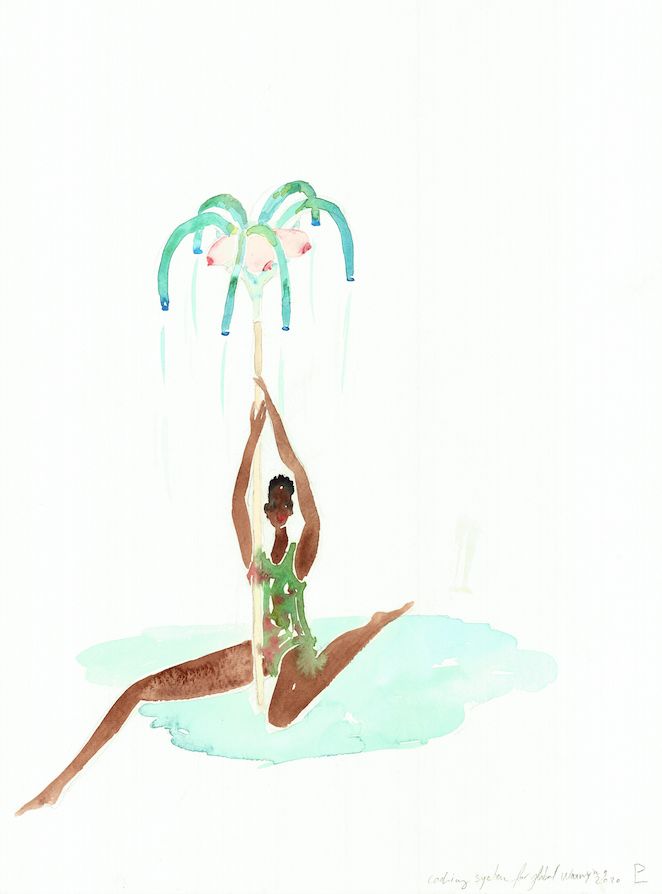
Laure Prouvost, Cooling System For Global Warming, 2020, Watercolor drawing
Courtesy the artist; Lisson Gallery, London
Biography:
Laure Prouvost was born in Lille, France (1978) and is currently based in Antwerp. She received her BFA from Central St Martins, London in 2002 and studied towards her MFA at Goldsmiths College, London. She also took part in the LUX Associate Programme. Language – in its broadest sense – permeates the video, sound, installation and performance work of Laure Prouvost. Known for her immersive and mixed-media installations that combine film and installation in humorous and idiosyncratic ways, Prouvost’s work addresses miscommunication and ideas becoming lost in translation. Playing with language as a tool for the imagination, Prouvost is interested in confounding linear narratives and expected associations among words, images and meaning.
Recent solo exhibitions include: 'AM-BIG-YOU-US LEGSICON’, M HKA - Museum of Contemporary Art Antwerp, Belgium (2019); Palais de Tokyo, Paris, France (2018); BASS Museum, Miami, FL, USA (2018); ‘They Are Waiting for You’, Performance for stage at the McGuire Theatre, Minneapolis, MN, USA (2018); SALT Galata, Istanbul, Turkey (2017); Kunstmuseum Luzern, Switzerland (2016); Pirelli HangarBicocca, Milan, Italy (2016); Museum Für Moderne Kunst Frankfurt Am Main, Frankfurt, Germany (2016); Red Brick Art Museum, Beijing, China (2016) and others. In 2011, Prouvost won the MaxMara Art Prize for Women and was the recipient of the Turner Prize in 2013. Prouvost represented France at the 58th International Art Biennial Venice, May-November 2019. June 2019 saw the artist's first public commission in the UK through Transport for London's Art on the Underground.
Work Synopsis:
The work, which is a comment on the nature of global warming, offers up a ridiculous future proposition as a solution to the issue of this problem. It is reflexively but obliquely contemplating how we might collectively think about conserving water.
Global warming is a subject that frequents Laure Prouvost’s practice. Her works often contemplate their current context while lamenting on a possible dystopian future that awaits us all.
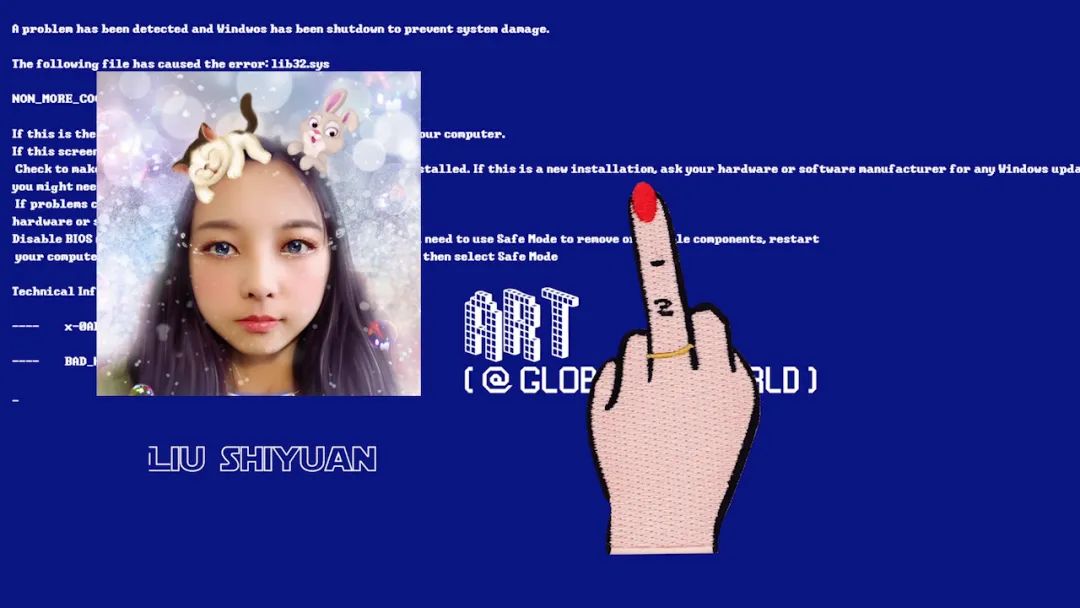
Liu Shiyuan & Kristian Mondrup, Best Friends Forever, 2017, Single channel video (color), 6´35´´
Courtesy the artist and Tanya Bonakdar Gallery, New York / Los Angeles, White Space, Beijing.
Biography:
Born 1985 in Beijing, Liu Shiyuan now lives and works between Beijing and Copenhagen. She received her MFA in Photography from the School of Visual Arts, New York in 2012, and BFA from Central Academy of Fine Arts, Beijing in 2009. Travelling and living between cities and across multiple cultures, Liu has developed an artistic sensibility in response to the contemporary Chinese diaspora, and its ensuing pattern of cultural shock. Manipulating everyday objects, stock images, and theatrical gestures, her practice navigates the subtle borderline between rationality and mystery, reality and fiction.
Liu Shiyuan’s recent solo exhibitions include In Other Words, Please Be True(White Space Beijing, Beijing 2019), Isolated Above, Connected Down (Tanya Bonakdar Gallery, New York, 2018), As Simple As Clay (Yuz Museum, Shanghai, 2015), From “Happiness” To “Whatever” (Leo Xu Projects, Shanghai, 2015), Lost In Export (White Space Beijing, Beijing, 2015) and others. Recent group exhibitions include NOWNESS Experiments: The Mesh(K11 Art Foundation, Shanghai, 2019), Lunar (UCCA, Beijing, 2019), A White Space Odyssey (White Space Beijing, Beijing, 2019), Love: Intimate(Today Art Museum, Beijing), Art Patrons(Qiao Space & Tank Shanghai, Shanghai, 2018), A Separation (Gallery Yang, Beijing, 2017), Visual Questions (Guangdong Museum of Art, Guangzhou, 2017), and others.
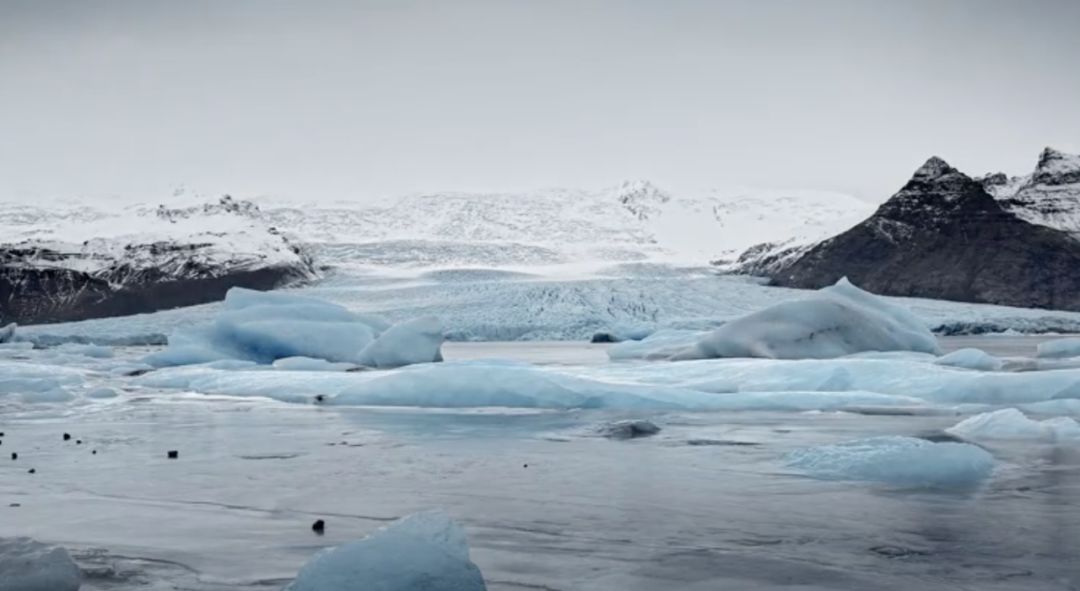
Michael Najjar, “terraforming”, 2017, HD Video (single channel, stereo), 9:10min
Courtesy the artist
Biography:
Michael Najjar (b. 1966) works and lives in Berlin, Germany. Najjar’s photo and video works exemplify and draw on his interdisciplinary understanding of art. His pictorial language of form and content guides the viewer into a complex construction of simulated reality which is generated by the montage of multiple image sources and elements. He removes the photographic image from its historical viewing conventions and resituates it in a fundamentally new mode of perception. Fusing science, art, and technology into visions and utopias of future social orders emerging under the impact of cutting-edge technologies, Najjar takes a complex critical look at the technological forces shaping and drastically transforming the early 21st century.
Najjar hasexhibited at Joan Miró Foundation, Barcelona; the 2006 Venice Biennale’s 10th International Architecture Exhibition; the 9th Havana Biennale; the 7th International Moscow Biennial; Academy of Arts, Berlin; Museum Ludwig, Cologne; Kunsthalle Hamburg / Galerie der Gegenwart, Hamburg; Deichtorhallen International Museum of Photography, Hamburg; Marta Museum, Herford; Edith Russ Site for Media Art Oldenburg; Museum of Art, Tucson; Science Museum, London; Museum of Contemporary Art, Birmingham; New Media Art Institute, Amsterdam; FORMA International Centre for Photography, Milan; Centre pour l’image contemporaine, Geneva; Museo DA2 (Domus Artium 2002), Salamanca; Centro de Arte Contemporaneo, Málaga; Museo Es Baluard, Palma de Mallorca; National Museum of Science, Taipei; Central Academy of Fine Arts, Beijing.
Images from Najjar’s Outer Space is also featured in ‘Civilization', an international photo exhibition that explores the current state of humankind. It has shown in Korea, Beijing and opens this month at the National Gallery in Victoria, Melbourne before moving to Europe and the Americas.
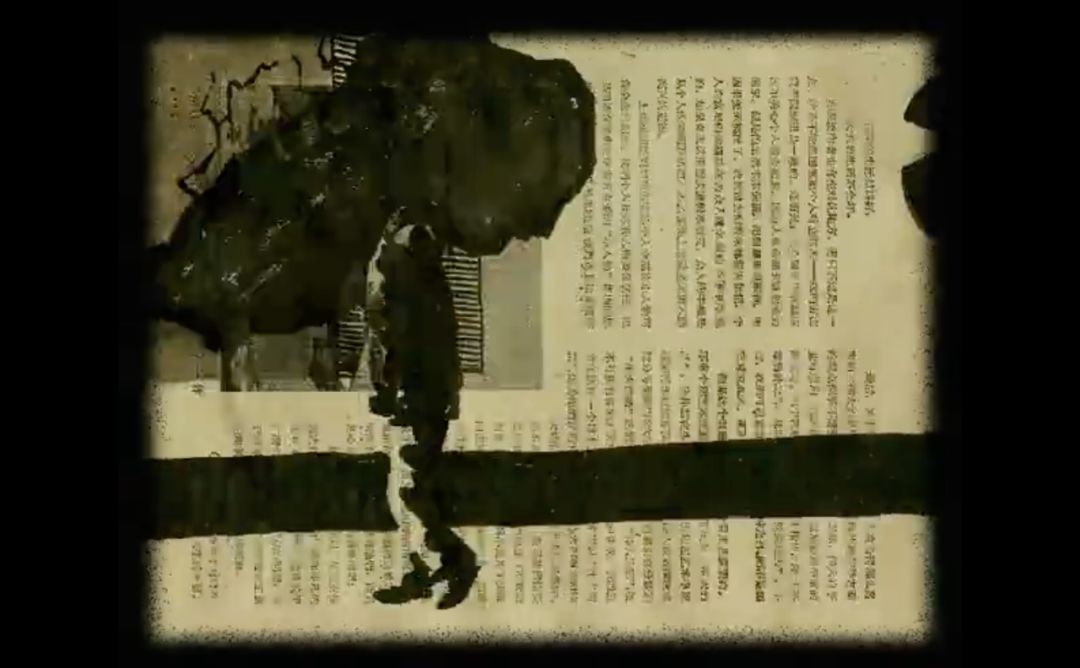
Sun Xun,Shock of Time, 2006, Video animation, 5’29”
Courtesy the artist
Biography:
Sun Xun was born in 1980 in Fuxin, Liaoning province, China. Currently lives and works in Beijing. Recent and past histories, intransigent conflicts and tensions, sequential flashes of hand-created images – these are the irrevocable features of Sun Xun’s artistic practice that fuses the line between art and animation. A graduate from the Printmaking Department of the China Academy of Arts in 2005, Sun Xun was a professor at the prestigious Academy before founding in 2006 his own animation studio. His work primarily involves making images using various materials such as color powder, woodcuts and traditional ink, and collating these to produce a film, which is often presented in an immersive setting. Sun Xun’s art thus acts as a theatre of memory, replete with shuttering sequences and jarring juxtapositions of surrealistic and recognizable images, which collectively serve to scrape the uncontested surface of politicized truth.
Work Synopsis:
A brief film synopsis by the artist:
The memory is empty, when man gets into a state of shock. The shock of time can also be called the shock of history. The most important element of this work is some old paper from the 50’s and 60’s. The papers recorded some important information of China. To me, it has become history which I can never get close to. For this reason, I can only use my work turned this history into a doubtful legend. Our conception of history has been twisted passively or voluntarily. There are lies, secrets or maybe farces behind all these things. Maybe it is just the real history. History is how we think but not what it is. Even we have archeology and museum, we still sorrow when we face the real history.
Director/Animation/Editor: Sun Xun
Producer: Tong Biao, Music by Jin Shan
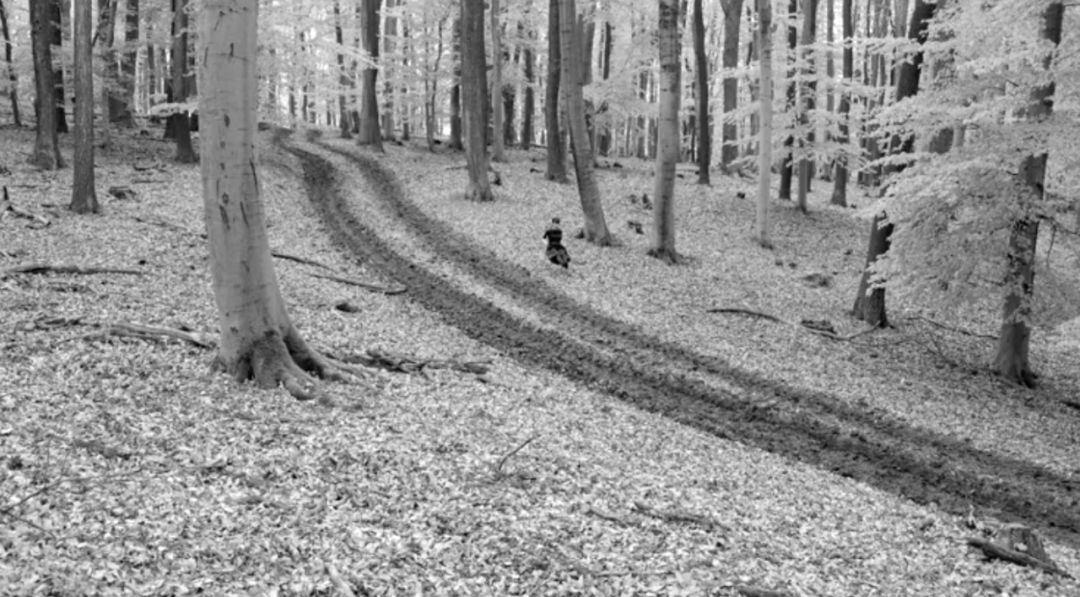
Yu Ji, Unseen Gesture – Lainzer, 2017, HDV, 13:38 min
Courtesy the artist
Biography:
Yu Ji (born 1985, Shanghai) obtained her MA from the Department of Sculpture, College of Art of Shanghai University, in 2011. She is known for a diverse practice that spans sculpture, installation, performance and video. Much of her work is motivated by the investigation of the concept of place, and the capacity for specific loci to be charged with geographical and historical narratives. She frequently conducts field research, as part of which she has staged temporary interventions in different sites around the world, which reflect upon and interrogate the place of the body within everyday environments. In 2008, she co-founded AM Art Space – an artist-led space in Shanghai, promoting experimentation and exchanges between artists, curators and the public. The artist lives and works in Shanghai and Vienna.
Work Synopsis:
Unseen Gestureis a series of video performances that document artist Yu Ji’s performance practice. These video works show the artist performing in front of the camera, with no audience present. In the workUnseen Gesture – Lainzer, for example, shot in Lainzer Tiergarten, located in the southwest corner of Vienna, Austria, in April of 2017, Yu brought a broken chair into the forest, and practiced various movements on the chair. For Yu, this is more a daily practice than a performance. The seriesUnseen Gestureexplores how the artist faces the world, and by extension the ground, objects close to her, how her body deals with reality, and these all inform the fundamental principles in Yu Ji’s art practice.
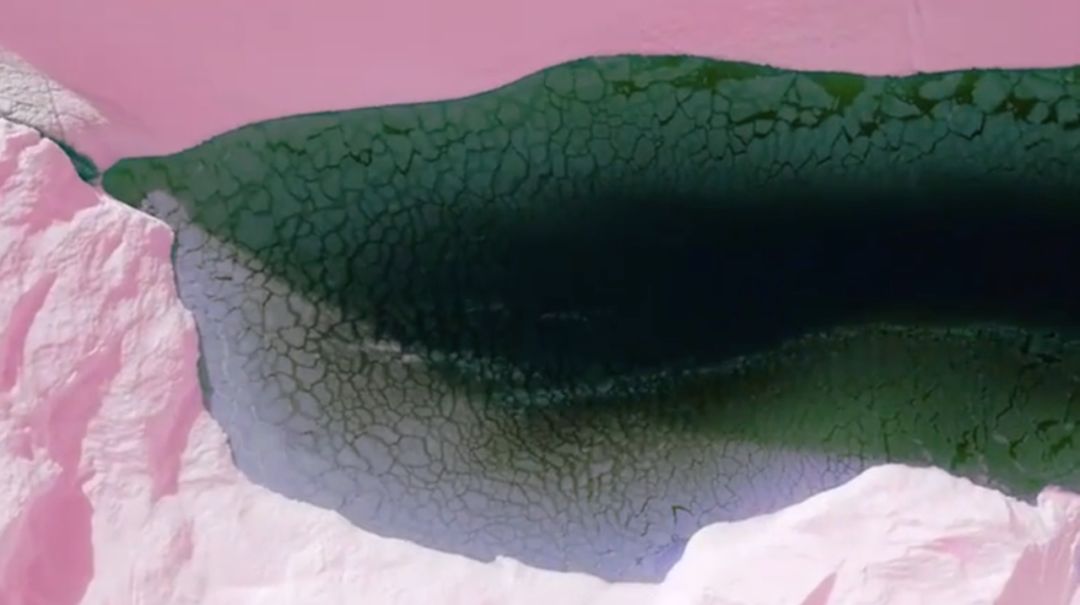
Zadie Xa, Child of Magohalmi and the Echoes of Creation, 2019, Single channel HD video, Excerpt only: 7:35min (full length: 50min 21sec)
Courtesy the artist
Biography:
Zadie Xa was born 1983 in Vancouver, Canada and currently living in London UK. She received an MA in Painting at the Royal College of Art in 2014 and her BFA at Emily Carr Institute of Art and Design in 2007. Through performance, video, painting and textiles, Xa explores the overlapping and conflation of cultures that inform notions of self. Her layered textile works are sites for exploring contemporary identity construction and performance through cultural sampling, informed by personal experience within the Asian diaspora. Throughout her practice, Xa uses water and marine ecologies as metaphors for exploring the unknown, whilst also alluding to abstract notions of homeland.
Xa’s work has been exhibited and performed in group and solo shows, including Whitechapel Gallery, London, Serpentine Gallery, London, Carl Freedman Gallery, London, Marcelle Joseph Projects, London, NTU Centre of Contemporary Art, Singapore, Brussels Art Department, Brussels, and Museo Maeztu de Estella, Spain.
Work Synopsis:
Child of Magohalmi and the Echoes of Creationdraws on Korean folkloric creation myths, matrilineal knowledge structures and marine ecologies as metaphors for exploring the unknown. This work was filmed on the unceded, traditional and ancestral xʷməθkʷəy̓əm (Musqueam), Sḵwx̱wú7mesh Úxwumixw (Squamish), and səl̓ilw̓ətaʔɬ(Tsleil-Waututh) territories.
Filmed sequences: Benito Mayor Vallejo
Edited: Zadie Xa
Audio narrations: Imsook Cha, Tiffany Chan, Daniella Valz Gen, Jemma Paek and Zadie Xa
Sound: Zadie Xa
Sound work mixed and mastered by Quadra Studios
Featured instrumentals: Enlightened Audio and“東京Smoke” produced by CUB$

To Be Continued...
With Contributions By:
aaajiao
Allora & Calzadilla
Annika Eriksson
Babi Badalov
Basim Magdy
Cerith Wyn Evans
Cheng Ran
Chulayarnnon Siriphol
Colectivo Los Ingrávidos
Daniel Steegmann Mangrané
Éléonore Saintagnan & Grégoire Motte
Fan Xi
Fang Di
Guido van der Werve
Haroon Mirza
Hu Xiaoyuan
Huang Rui
Jonathas de Andrade
Katja Novitskova
Laure Prouvost
Lawrence Abu Hamdan
Lawrence Lek
Li Binyuan
Lin Tianmiao
Li Tingwei
Liu Shiyuan & Kristian Mondrup
Lu Pingyuan
Lu Yang
Miao Ying
Michael Najjar
Nabuqi
Oscar Murillo
Patty Chang
Raqs Media Collective
Reynier Leyva Novo
Richard Tuttle
Robert Zhao Renhui
Rodrigo Braga
Ryuichi Sakamoto
Solange Pessoa
Stephanie Comilang
Sun Xun
Tania Bruguera
Timur Si-Qin
Victoria Sin
Visionist
Xiang Jing
Xie Nanxing
Yang Zhenzhong
Yu Ji
Zadie Xa
Zhang Enli
Zhang Peili
Zhao Zhao